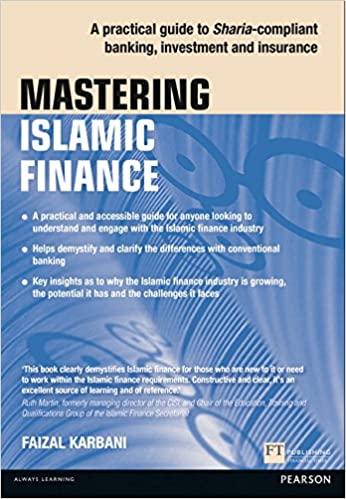Question
Q1A) which of the following is most correct? When the return on capital employed (ROCE) is less than the before tax cost of debt, a
Q1A) which of the following is most correct?
When the return on capital employed (ROCE) is less than the before tax cost of debt, a company can increase its ROE by trading out equity and into debt.
When the return on capital employed (ROCE) is more than the before tax cost of debt, a company can increase its ROE by trading out equity and into debt.
When the return on capital employed (ROCE) is less than the after tax cost of debt, a company can increase its ROE by trading out equity and into debt.
When the return on capital employed (ROCE) is more than the after tax cost of debt, a company can increase its ROE by trading out equity and into debt.
-None of the above
Question 2B) A firm that employs a relatively large proportion of debt in its capital structure will have a relatively ____ degree of financial leverage.
-LOW
high
insignificant
constant
Question 1C)
A DFL (degree of financial leverage) of 3.0 indicates that a 27% increase in EPS is the result of a ____ increase in EBIT.(hint: the EBIT moves __% causing a magnified increase 3 times that in EPS.)
-81%
3%
9%
6%
Question 1D)Financial leverage increases a firm's ROE and EPS under which of the following circumstances?ROCE= Return on Capital Employed
ROCE = cost of debt
ROCE> after tax cost of debt
ROCE>pre tax cost of debt
ROCE = cost of equity
Step by Step Solution
There are 3 Steps involved in it
Step: 1

Get Instant Access to Expert-Tailored Solutions
See step-by-step solutions with expert insights and AI powered tools for academic success
Step: 2

Step: 3

Ace Your Homework with AI
Get the answers you need in no time with our AI-driven, step-by-step assistance
Get Started


